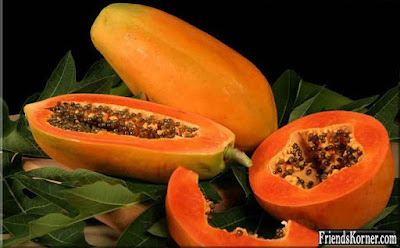Pouteria caimito, the abiu, is a tropical fruit tree originated in the Amazonian region of South America. It will grow an average of 33 feet (10 m) high, and can grow as high as 116 feet (35 m) under good conditions. Its fruit’s shape varies from round to oval with a point. When ripe, it has smooth bright yellow skin and will have one to four ovate seeds. The inside of the fruit is translucent and white. It has a creamy and jelly-like texture and its taste is similar to the sapodilla — a sweet caramel custard. The abiu tree is part of the Sapotaceae family and is very similar in appearance to the canistel.
The abiu, Pouteria caimito, is commonly considered as native to the headwaters of the Amazon. It grows wild in the lower eastern part of the Andes from southwestern Venezuela to Peru. It also grows around Iquitos, Peru and it will commonly be found in the Province of Guayas in Ecuador, where it's sold in the markets. Due to early and widespread cultivation by Amerindians, its original distribution in Brazil, outside the Amazon, is uncertain. In the Amazon basin, it is found to grow heavily in Pará but is also found sparsely in collections from the Atlantic rainforest near Rio de Janeiro and Bahia. It can also be found in Colombia in areas such as the regions of Caquetá, Meta and Vaupes and it is very plentiful in Amazonas, Venezuela. It has also been growing for a very long time in Trinidad.
The abiu grows best in areas that have a year-round moist and a warm climate. It will do well in wet soil. It can now be found throughout most of the Amazon. It is a common dooryard tree in the backyards and streets in the city of many Brazilian towns, but it is not usually grown commercially. The abiu habitats are nearly all tropical. It will thrive in a place that has a year round warm and moist climate, although it has been known to grow well in Rio de Janeiro, which is a somewhat cooler climate. In Peru it cannot grow above 2,000 feet (610 m) feet in elevation, but in Colombia it has been found growing up to an elevation of 6,000 feet (1,800 m).
The leaves of Pouteria caimito range from oblong to elliptic. The can be anywhere from four to eight inches in length and one and a half to two and a half inches in width. The flowers on the tree can come either by themselves or in clusters of two to five flowers. They will appear on the leaf axils on long, thin shoots. The flowers are small with four to five petals. The petals are cylindrical and are white to greenish in color. The flowers are hermaphroditic, meaning they are both sexes. The flowers open in the morning and can stay open for about two days.
The abiu, Pouteria caimito, is commonly considered as native to the headwaters of the Amazon. It grows wild in the lower eastern part of the Andes from southwestern Venezuela to Peru. It also grows around Iquitos, Peru and it will commonly be found in the Province of Guayas in Ecuador, where it's sold in the markets. Due to early and widespread cultivation by Amerindians, its original distribution in Brazil, outside the Amazon, is uncertain. In the Amazon basin, it is found to grow heavily in Pará but is also found sparsely in collections from the Atlantic rainforest near Rio de Janeiro and Bahia. It can also be found in Colombia in areas such as the regions of Caquetá, Meta and Vaupes and it is very plentiful in Amazonas, Venezuela. It has also been growing for a very long time in Trinidad.
The abiu grows best in areas that have a year-round moist and a warm climate. It will do well in wet soil. It can now be found throughout most of the Amazon. It is a common dooryard tree in the backyards and streets in the city of many Brazilian towns, but it is not usually grown commercially. The abiu habitats are nearly all tropical. It will thrive in a place that has a year round warm and moist climate, although it has been known to grow well in Rio de Janeiro, which is a somewhat cooler climate. In Peru it cannot grow above 2,000 feet (610 m) feet in elevation, but in Colombia it has been found growing up to an elevation of 6,000 feet (1,800 m).
The leaves of Pouteria caimito range from oblong to elliptic. The can be anywhere from four to eight inches in length and one and a half to two and a half inches in width. The flowers on the tree can come either by themselves or in clusters of two to five flowers. They will appear on the leaf axils on long, thin shoots. The flowers are small with four to five petals. The petals are cylindrical and are white to greenish in color. The flowers are hermaphroditic, meaning they are both sexes. The flowers open in the morning and can stay open for about two days.























































